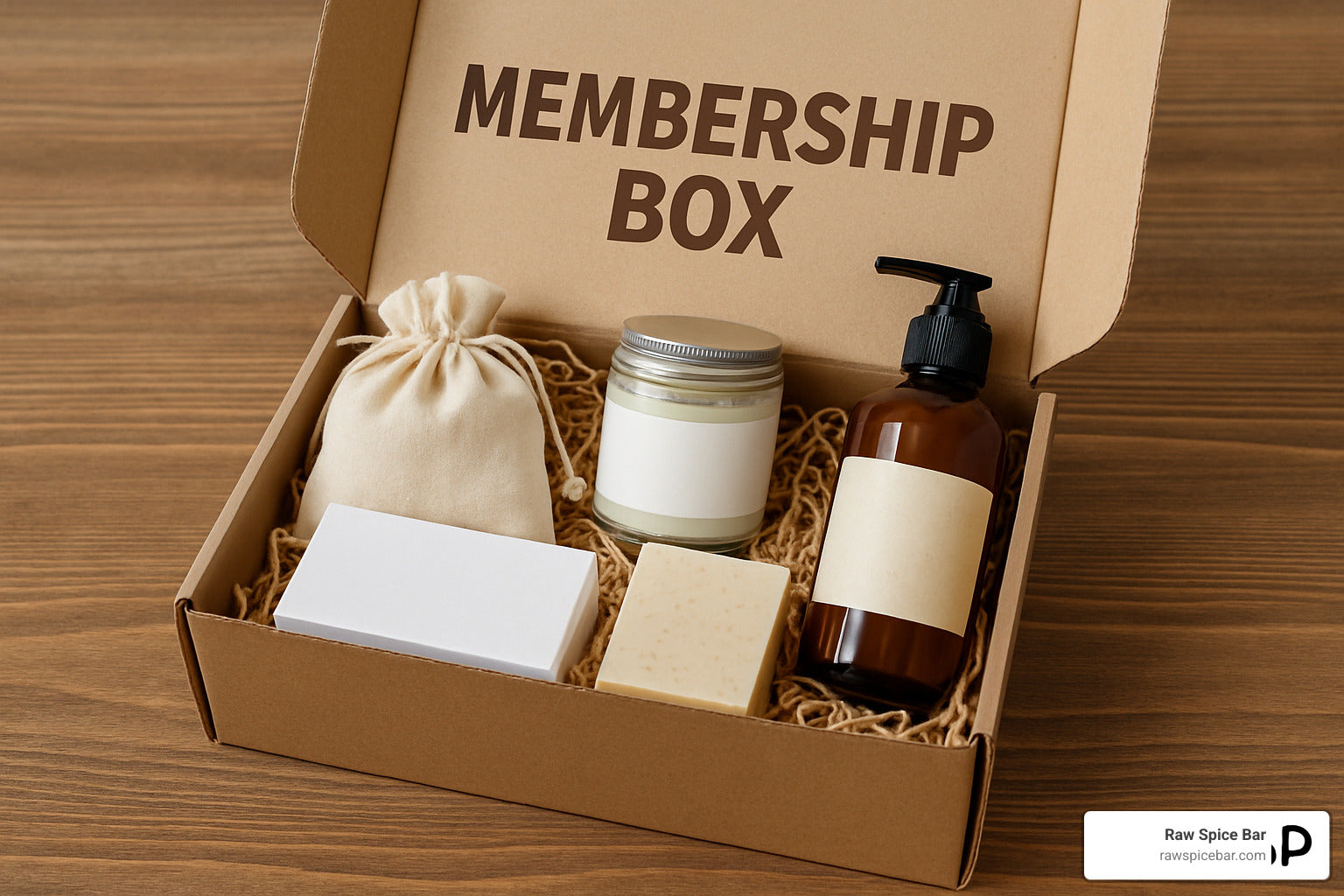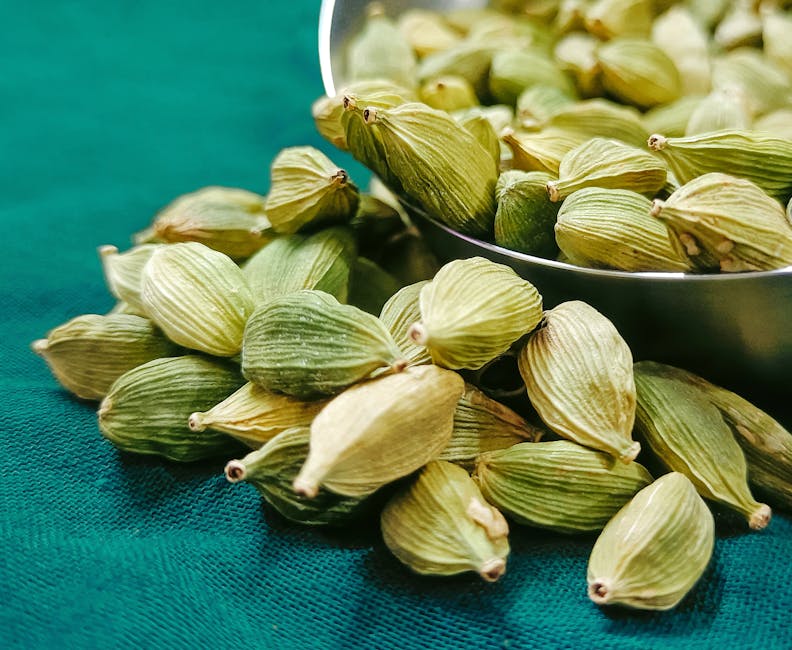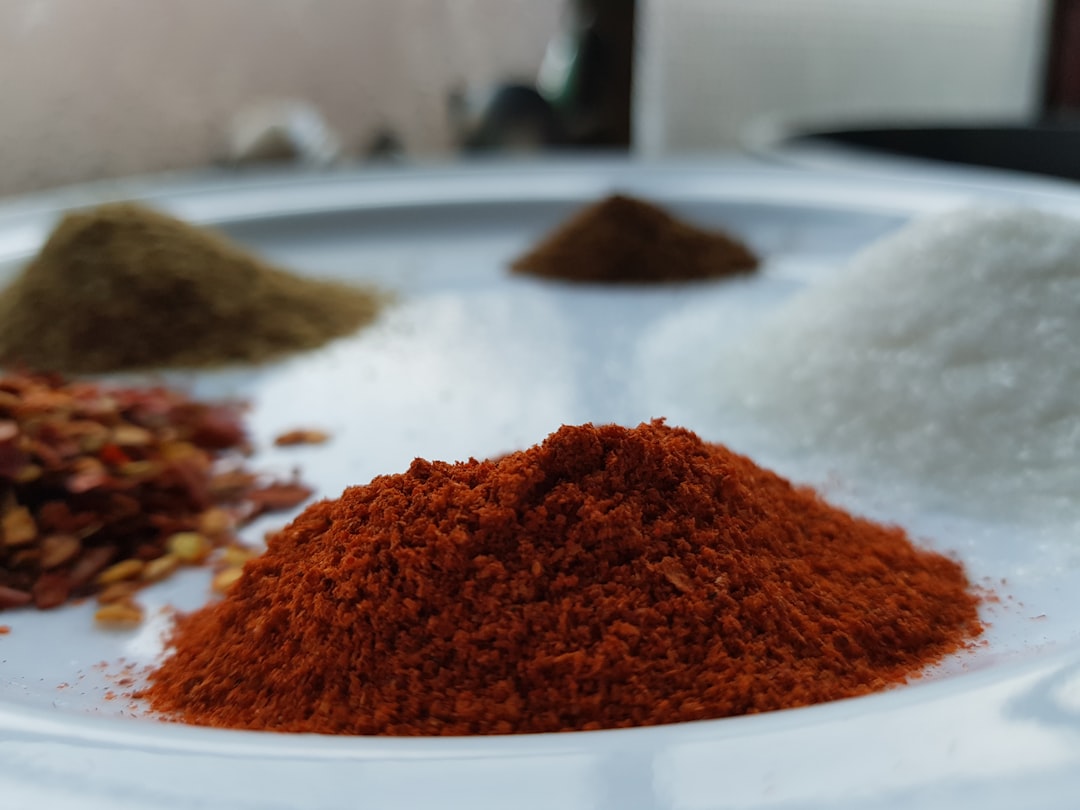Why DIY Poultry Seasoning Blend is Your Kitchen Game-Changer
A DIY poultry seasoning blend is a simple mix of dried herbs and spices that you can make at home in just 2-5 minutes. Here's what you need to know:
Quick Recipe:
- 4 tablespoons ground sage
- 3 tablespoons dried thyme
- 2 tablespoons dried marjoram
- 1 tablespoon ground rosemary
- ½ tablespoon ground nutmeg
- ½ tablespoon black pepper
Key Benefits: - Cost savings - Make your own for pennies vs. store prices - Zero preservatives - Pure herbs, no additives or MSG - Sodium control - Add salt only when you want it - Fresh flavor - Tastes better than jarred versions - Versatile - Works on chicken, turkey, vegetables, soups, and more
Instead of making that emergency store run when a recipe calls for poultry seasoning, you can whip up a fresh batch using common pantry spices. Making your own blend means complete control over flavor and ingredients. Store-bought versions often contain excess salt, sugar, or preservatives that homemade versions skip entirely. Plus, your DIY version stays fresh for up to 6 months when stored properly.
I'm Joseph Rosenblatt, founder of a successful spice brand specializing in salt and sugar-free blends from around the world. Through years of crafting premium DIY poultry seasoning blend recipes, I've learned what makes homemade spice mixes truly shine.

What Is Poultry Seasoning & Why Make It Yourself?
Poultry seasoning was born in the 1800s when American home cooks sought the perfect way to season their holiday turkey. This DIY poultry seasoning blend centers around sage, which gives it that unmistakable "holiday dinner" aroma - that warm, comforting scent of stuffing, roasted turkey, and family traditions.
Traditional poultry seasoning is beautifully simple, containing no salt - just pure herbs and spices working together to improve your food's natural flavors rather than mask them.
But store-bought versions often sneak in unwanted extras like preservatives, anti-caking agents, and sometimes MSG. Many brands load up on salt, which defeats the purpose of this traditionally salt-free blend.
Making your own changes everything. A single homemade batch costs under $2 and gives you the equivalent of 3-4 store-bought containers. Plus, you're reducing packaging waste.
Flavor Profile & Typical Ingredients
When you open a jar of well-made DIY poultry seasoning blend, sage leads with its earthy, slightly bitter foundation and hints of pine. Thyme brightens everything with lemony, minty undertones. Marjoram adds gentle sweetness - like oregano's milder, more floral cousin. Rosemary brings distinctive piney, resinous notes that pair beautifully with sage.
Nutmeg adds subtle sweetness and depth, while black pepper provides just enough heat to wake up your taste buds and amplify all the other flavors.
Together, these six ingredients create the essence of comfort food, holiday memories, and home cooking at its finest.
Advantages of a DIY Blend
Making your own DIY poultry seasoning blend means complete control over every ingredient and ratio. Love rosemary's pine-y kick? Add more. Find nutmeg overwhelming? Scale it back.
Zero preservatives means you know exactly what's going into your food - just pure herbs and spices, nothing artificial. For anyone avoiding gluten, homemade blends eliminate cross-contamination concerns.
Home cooks consistently rate DIY poultry seasoning recipes between 4.8 and 5 stars, with reviewers raving about superior flavor compared to jarred versions.
Perfect sodium control might be the biggest advantage. Since traditional poultry seasoning contains no salt, you add exactly what your recipe needs - invaluable for anyone managing blood pressure or following low-sodium diets.
Building Your DIY Poultry Seasoning Blend
Making your own DIY poultry seasoning blend is surprisingly simple once you understand the core herbs and their perfect ratios. Think of sage as your lead vocalist - it carries the melody that makes poultry seasoning instantly recognizable.
We recommend starting with a half-cup batch - perfect for multiple meals without losing freshness. All you need are accurate measuring spoons and maybe a spice grinder if you want to get fancy with whole herbs.
Core Ingredients & Best Ratios for a ½-Cup Batch
Here's the tried-and-true formula for your DIY poultry seasoning blend that yields about 8 tablespoons:
Your classic blend starts with 4 tablespoons of ground sage as the foundation. Add 3 tablespoons of dried thyme for earthy brightness. 2 tablespoons of dried marjoram bring sweet floral notes. 1 tablespoon of ground rosemary adds piney depth. Finally, ½ tablespoon each of ground nutmeg and finely ground black pepper provide warmth and gentle heat.
For a spicy variation, use the same base but add ¼ tablespoon of cayenne pepper and ½ tablespoon of paprika.
| Ingredient | Classic Blend | Spicy Variation |
|---|---|---|
| Ground Sage | 4 Tbsp | 4 Tbsp |
| Dried Thyme | 3 Tbsp | 3 Tbsp |
| Dried Marjoram | 2 Tbsp | 2 Tbsp |
| Ground Rosemary | 1 Tbsp | 1 Tbsp |
| Ground Nutmeg | ½ Tbsp | ½ Tbsp |
| Black Pepper | ½ Tbsp | ½ Tbsp |
| Cayenne Pepper | - | ¼ Tbsp |
| Paprika | - | ½ Tbsp |
The sage-to-thyme ratio is your secret weapon. This 4:3 ratio creates the perfect balance that makes people ask, "What did you put on this chicken?"
Grinding & Texture Tips for the Perfect DIY Poultry Seasoning Blend
Getting the right texture makes the difference between amateur and professional results. You want a fine, uniform powder that clings to food and distributes evenly.
Grinding whole herbs fresh creates incredible flavor and aroma. When substituting whole herbs for ground, use about double the amount since whole leaves are less concentrated.

Your coffee grinder method produces the finest, most consistent texture. Just make sure it's dedicated to spices. Pulse in short bursts to avoid overheating the herbs.
The mortar and pestle technique takes more effort but gives you complete control over texture while releasing maximum aromatic oils.
Fine powder ensures even distribution when seasoning food. Uniform texture prevents flavor hot spots and helps the seasoning stick well to meat surfaces.
For more detailed guidance on perfecting your spice-blending technique, our comprehensive guide on How to Blend Your Own Spice Mixes at Home covers everything from equipment choices to storage secrets.
Customizing, Variations & Salt Considerations
The beauty of creating your own DIY poultry seasoning blend lies in making it uniquely yours. Unlike store-bought versions locked into one flavor profile, your homemade blend becomes a canvas for creativity.
Want more heat? Add cayenne pepper or red chili flakes. Missing savory depth? Garlic and onion powders work wonders. Craving brightness? A touch of dried citrus zest transforms the entire blend. The traditional salt-free base gives you complete control over sodium levels.
Common Variations & Substitutions in Your DIY Poultry Seasoning Blend
Oregano makes an excellent substitute for marjoram - use the same amount, though expect a slightly more assertive flavor.
Smoked paprika is my favorite addition for anyone who loves grilled or roasted meats. Just one tablespoon transforms the blend with subtle smoky notes. For gentle heat, try adding ¼ to ½ teaspoon of red chili flakes.
Create a Herbs de Provence-inspired variation by replacing marjoram with dried basil and adding a pinch of lavender. Go easy on the lavender - too much can make your seasoning taste like soap.
Garlic powder (1-2 tablespoons) and onion powder (1 tablespoon) add wonderful savory depth, while dried lemon zest (½ tablespoon) brings unexpected brightness.
For more inspiration on herb combinations, check out our guide comparing Herbs de Provence vs Italian Seasoning.
Should You Add Salt? Pros, Cons & Best Practices
Here's my honest take: keep your DIY poultry seasoning blend salt-free. Traditional poultry seasoning never contained salt, and there's good reason for that tradition.
Salt-free blends give you incredible control. You can season a delicate soup lightly or go bold on roasted vegetables without being locked into someone else's salt preferences.
From a practical standpoint, salt can actually shorten your blend's shelf life by drawing moisture that reduces herb potency.
If you absolutely prefer an all-in-one seasoned salt, add 1-2 tablespoons of kosher salt to the basic recipe. Just remember this limits your flexibility.
The average American already consumes about 3,400mg of sodium daily, well above the recommended 2,300mg limit. Keeping your spice blends salt-free helps you stay within healthy ranges while still enjoying bold flavors. For more information on sodium intake and health, check out scientific research on sodium intake.
Storing, Shelf Life & Health Benefits
Getting the most out of your DIY poultry seasoning blend comes down to smart storage and understanding what you're putting into your body. When you store your blend properly, it'll keep its bold flavor for 4-6 months.
The secret to long-lasting freshness is protecting your blend from air, light, and heat. Unlike store-bought versions loaded with preservatives, your homemade blend relies entirely on good storage to stay fresh.

Every herb is working to support your health. You're getting antioxidants from thyme, anti-inflammatory compounds from sage, and absolutely zero MSG or artificial preservatives. Plus, it's naturally vegan-friendly and perfect for anyone avoiding processed foods.
Containers, Labeling & Pantry Organization
Glass mason jars with tight-fitting lids are your best bet - they're completely airtight, easy to clean, and you can see exactly what's inside.
Clean recycled spice bottles work beautifully for smaller batches. Just make sure they're bone dry before filling. Avoid plastic containers - they're not as airtight as glass and can absorb odors.
Keep your blend in a cool, dark pantry away from your stove, dishwasher, and heat sources. Humidity is the enemy of dried herbs. If you live somewhere muggy, consider storing your jar in the refrigerator.
Always label your containers with both contents and the date you made the blend. Include your recipe ratios on the label if you've customized the blend.
For more detailed storage tips, check out our guide on Best Ways to Store Spices for Freshness.
Nutritional & Dietary Perks
Your DIY poultry seasoning blend is basically a health powerhouse disguised as a flavor improver. Sage leads with anti-inflammatory properties thanks to rosmarinic acid. Thyme packs serious antioxidant power, loaded with vitamin C and flavonoids.
The entire blend contains only about 12 calories per tablespoon. This blend checks every dietary box: it's naturally gluten-free, completely vegan, keto-friendly with virtually no carbs, and heart-healthy with no sodium, trans fats, or cholesterol.
Many of these herbs, especially thyme and rosemary, have traditionally supported digestive health. The best part? No mystery preservatives, no hidden MSG, no artificial anything - just pure, beneficial herbs working together.
Using Your Homemade Blend Beyond Poultry
Your DIY poultry seasoning blend works magic far beyond chicken and turkey. The sage-forward profile creates comfort food flavors that transform ordinary dishes into something special.
Think of this blend as your secret weapon for fall and winter cooking. The warm, earthy herbs add depth to soups, gravies that bring back holiday memories, and roasted vegetables that actually make your family excited about eating their greens.

Vegetarian & Vegan Applications of DIY Poultry Seasoning Blend
Your DIY poultry seasoning blend transforms plant-based cooking by adding the savory depth that vegetarian dishes sometimes lack.
Tofu roasts become genuinely exciting when you press the tofu, then coat it with this blend mixed into olive oil before roasting. The herbs create a flavorful crust that makes tofu taste like something you'd actually crave.
Vegetable broth gets a major upgrade with just 1-2 tablespoons of your blend. The sage and thyme combination creates a broth so rich and complex that you'll wonder why you ever bought the boxed stuff. This improved broth becomes the foundation for incredible mushroom gravies.
Plant-based proteins like tempeh and seitan absorb these flavors beautifully. The nutty taste of tempeh pairs especially well with the earthy herbs.
Quick Recipe Inspirations Featuring Your DIY Poultry Seasoning Blend
Roast turkey or chicken reaches new heights when you create a paste with 2 tablespoons of your blend and olive oil, then rub it under and over the skin.
Chicken noodle soup transforms from ordinary to extraordinary with just 1 tablespoon stirred into the broth. Lentil stews become hearty, satisfying meals when you add 1-2 tablespoons during cooking.
Sheet-pan vegetables turn into the star of the meal when tossed with olive oil and this seasoning before roasting. Root vegetables especially benefit from the herb combination.
Stuffing muffins make portion control easy while delivering all the traditional flavors. Mix your blend into any stuffing recipe, then bake in muffin tins for individual servings.
For even more creative ways to use herb blends, check out our guide on the Best Poultry Seasoning Substitute.
Frequently Asked Questions about DIY Poultry Seasoning Blend
Let's tackle the most common questions I hear from home cooks about making their own DIY poultry seasoning blend. These are the real concerns that come up when you're standing in your kitchen, wondering if your homemade blend is still good or trying to figure out how much to make for holiday gifts.
How long does homemade poultry seasoning last?
Your DIY poultry seasoning blend will stay at peak flavor for 4-6 months when stored properly in an airtight container. After that, it's still perfectly safe to use for up to a year, but you might notice the flavors becoming a bit muted.
The secret is proper storage - keep your blend in a cool, dark pantry away from heat sources like your stove. Glass containers work best because they don't absorb odors or let air seep in like plastic can.
Here's a pro tip: your blend is only as fresh as your oldest ingredient. Before mixing up a batch, check the expiration dates on your individual herbs. If your thyme expired last year, your fresh sage won't save the blend from tasting flat.
You'll know it's time to make a new batch when the aroma isn't as strong when you open the jar. Fresh poultry seasoning should smell immediately fragrant and make you think of holiday dinners.
Can I double or triple the recipe for gifting?
This is one of my favorite questions because homemade DIY poultry seasoning blend makes such thoughtful gifts! The recipe scales beautifully - just multiply everything proportionally.
For a double batch, use 8 tablespoons sage, 6 tablespoons thyme, 4 tablespoons marjoram, 2 tablespoons rosemary, and 1 tablespoon each of nutmeg and black pepper. A triple batch means 12 tablespoons sage, 9 tablespoons thyme, 6 tablespoons marjoram, 3 tablespoons rosemary, and 1½ tablespoons each of nutmeg and black pepper.
Many home cooks make huge batches during the holidays. Small mason jars with handwritten labels become incredibly meaningful gifts that cost pennies to make but provide real value. Your friends and family will love having homemade seasoning that tastes better than anything from the store.
The beauty of gifting spice blends is that they're practical, last for months, and show you put thought into creating something useful. Plus, every time they use it, they'll think of you!
Is this blend suitable for low-sodium diets?
Absolutely! Traditional DIY poultry seasoning blend contains zero salt, making it perfect for anyone watching their sodium intake. This is actually one of the biggest advantages of making your own blend.
The herbs provide incredible flavor depth without any sodium content. You get all that savory, aromatic goodness from sage, thyme, and the other herbs without worrying about hidden salt. This means you can add salt separately if you want it, or skip it entirely.
This is especially valuable for people managing hypertension or heart conditions who need to limit sodium. Instead of missing out on flavorful food, you can use your homemade blend generously and still stay within healthy sodium limits.
The result proves that you don't need salt to create satisfying, delicious flavors. Your DIY poultry seasoning blend delivers all the taste complexity you want while giving you complete control over the sodium in your meals.
Conclusion
There's something deeply satisfying about creating your own DIY poultry seasoning blend from scratch. In those few minutes of measuring and mixing, you're taking control of your kitchen and your family's health.
The change is immediate and obvious. Your homemade blend delivers fresher flavors than anything sitting on store shelves. You save money while avoiding preservatives and excess sodium. Most importantly, you gain the freedom to customize every pinch to match your taste preferences.
Whether you're preparing a holiday feast, adding depth to a simple weeknight soup, or helping a vegetarian friend find amazing seasoned roasted vegetables, this versatile blend becomes that reliable kitchen companion you reach for again and again.
Once you master this basic technique, a whole world of spice blending opens up. You'll start eyeing other spice rack staples with new confidence, wondering what other flavor combinations you can create.
At Raw Spice Bar, we love seeing home cooks find the joy of working with fresh, quality spices. While our monthly subscription brings globally-inspired blends and seasonal recipes right to your door, there's something uniquely rewarding about crafting your own signature blends from the ground up.
Ready to expand your spice mastery even further? Check out our guide on How to Toast Spices for Maximum Flavor to find how this simple technique can transform your homemade blends from good to absolutely extraordinary.
Your kitchen trips are just beginning. Happy blending!





